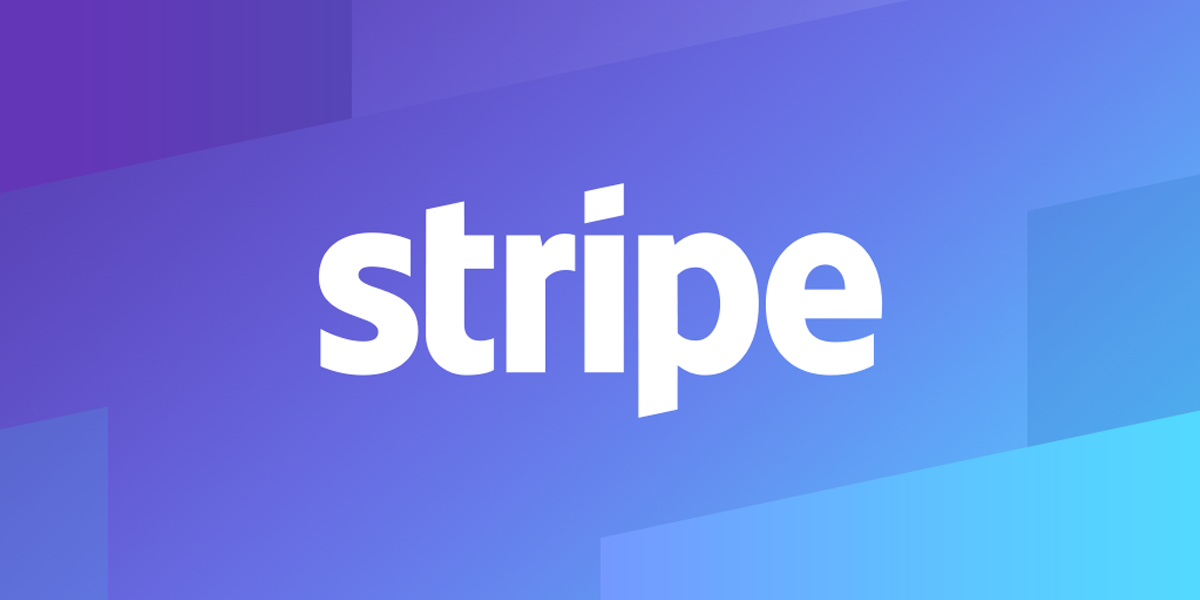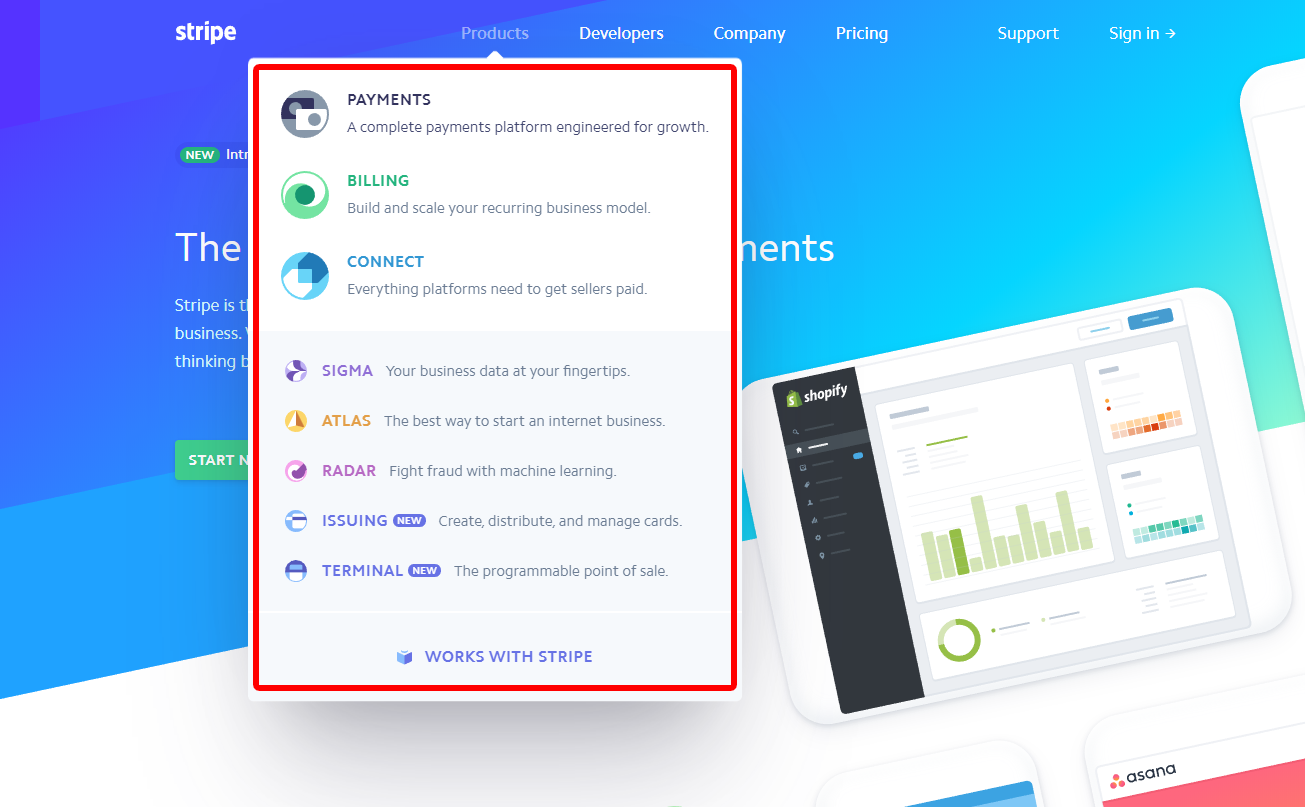9 Unique Things You Didn’t Know About Stripe
By
|
Last updated on
We’ve made no secret that we think Stripe is the best payment processor for most businesses. Businesses of every size can find value in Stripe’s extensive suite of tools, easy setup, and competitive prices.
While the product is undoubtedly great, we also think the company itself is quite interesting. We’d like to let our inner fanboy show for a moment to share some interesting and unique facts about Stripe.
Browse this rundown of Stripe products. If they meet your needs, you may want to add some of them to your stack.
1. Stripe Doesn’t Just Process Payments
Stripe isn’t just a tool you use to take money from your customers and drop it in your bank account. They’re also developing a complex suite of tools and resources to help you sell more online without hacking multiple tools together.
- Billing lets you create complex billing systems for any pricing model.
- Connect lets you create marketplaces for buyers and sellers to work together.
- Radar is a suite of machine-learning fraud detection tools. (Read our thoughts.)
- Terminal gives your online business a physical presence.
- Atlas is a fully managed business creation service.
- Sigma is an SQL-powered analytics tool. (See our thoughts.)
- Issuing lets you create, distribute, and manage physical cards.
And of course there are countless integrations to make Stripe work with any tool or app you could possibly need. Over time, we expect Stripe to release even more tools to bring more online businesses and entrepreneurs into their ecosystem.
2. Stripe Works Closely With Some Governments
Stripe is best known for giving small businesses, startups, and entrepreneurs an easy way to collect online payments. But there’s another arm of the company that works on massive government projects.
The British Government, for example, uses Stripe to process payments for many of its agencies and departments. They have a broad contract with Stripe so any new agency can sign up and start processing payments just as quickly as anyone else.
3. Employee Emails Are Open to Everyone
This is one of those facts that’s almost too hard to believe. Every employee at Stripe can read every other employees’ email.
“Stripe believes in autonomy and avoiding hierarchy to the extent that it can,” says James Allgrove, Head of U.K., Stripe, “so it decided early on that an open flow of information would give all employees the context they need to choose useful things to work on.”
That is an absurd amount of transparency. Imagine working in an environment where everyone could read your communications. Yes, it would make information highly accessible, and that is surely one of Stripe’s goals. But it is also a clever way to hold everyone accountable. Since nothing is secret, everyone is on their best behavior all the time.
This also has the effect of reducing siloing within the organization. Departments or teams can’t horde knowledge or resources because that data is available to everyone at any time. It’s also a great way to get people up to speed after hiring or joining projects.
4. Stripe Doesn’t Want to Be PayPal
While it’s true that Stripe and PayPal compete for some of the same customer base, Stripe isn’t trying to be another PayPal (or Square or Authorize.net for that matter).
Where PayPal focuses on the end consumer (buyers and sellers), Stripe is also concerned about developers, middlemen (like marketplaces), and companies that have unique billing needs.
We wrote about the differences between Stripe and PayPal in our article: PayPal vs. Stripe: Which Payment Processor is Right for Your Business?
5. Peter Thiel was an Early Investor
If you are familiar with startups, you’ve probably heard the name Peter Thiel, the Bitcoin Bank king. He’s well known for starting Palantir and being Facebook’s first outside investor. He’s made investments into AirBnB, LinkedIn, SpaceX, Asana, Quora, and Yelp. He also launched a little payment processing company called PayPal.
Interestingly, Thiel was also an early investor in Stripe through Founders Fund, his venture capital firm. Other members of the fund include Max Levchin and Elon Musk. It’s said Thiel had a heavy influence on the startup’s pricing model.
6. It’s Nearly Impossible to Avoid Stripe
Even if you don’t use Stripe to process payments, your money has probably passed through Stripe’s sphere of influence at some point. They don’t just process payments for small startups and freelancers. They also process payments for some of the biggest online stores and services.
Here are just a few companies who work with Stripe. Chances are you have used some of these yourself.
- Blue Apron
- Lyft
- Target
- Task Rabbit
- Doordash
- Squarespace
- Salesforce
- HubSpot
- DocuSign
- Indiegogo
- Open Table
- Under Armour
- Shopify – Every store!
7. Stripe Has Always Been a Developer-First Product
Stripe’s marketing model has always been to target and please developers first. The plan was to create a product that developers and bootstrappers love. They would become an evangelist of the product and recommend it to their clients and partners.
For instance, if a new company wants to begin taking payments online, they might hire a developer to build a website. The developer would steer the client toward Stripe because it makes his life easier.
This is how Stripe avoided marketing in their early days. They built a great product and let it spread through word of mouth.
How do they make developers’ lives easier? Stripe’s API and documentation are renowned for being easy to use and fast to implement. It supports multiple programming languages so they can build their own forms and integrations. Stripe also has a robust testing feature to make sure custom code works.
Stripe’s developer-first approach is one of the reasons we choose to partner with them for our WordPress plugin, WP Simple Pay.
8. The Founders Built Stripe in Buenos Aires
Increasingly, Buenos Aires has a reputation for being a popular place for startup entrepreneurs to build products. According to Stripe co-founder Patrick Collison, Buenos Aires “is like the best place ever to go and hack, because it is really cheap, and everything is open really late and there is Wi-Fi everywhere and the climate is really nice and everything.”

Collison says they spent about $10/day and worked in public cafes and restaurants. They were able to devote themselves entirely to Stripe and built their first prototype in just a month.
They didn’t wait to find customers, either. They had their first user after a week. Rather than wait to build something polished and professional (like Stripe is now), they built quickly and extracted feedback from their users. They didn’t guess what people wanted. They actually asked people.
9. Stripe Learns from Its Users
Machine learning is a big part of Stripe’s ability to onboard users and protect you (and itself) from fraudulent transactions. The more people use Stripe, the more it learns how to better serve us and defeat scammers and hackers.
How does it work? Basically, Stripe Radar will take a close look at your transactions to learn about your customers. It will then let you create rules to protect yourself from fraud. For instance, you could create a rule to “block all transactions when the billing address doesn’t match the card’s country.”
What makes Stripe’s machine learning fraud detection is how it identifies fraud signals. For instance, Stripe can detect if the round-trip time between Stripe and the end user is too long, which might signal that the buyer is disguising themselves with a proxy or VPN. No other payment processor offers that kind of granular analysis on every transaction.
Going Forward
Hopefully by now you understand that Stripe isn’t a traditional payment processor. It’s a company that hopes to disrupt the entire online business industry. Whether you choose to use Stripe or one of its competitors, these interesting facts illustrate that Stripe offers a unique product you just can’t find anywhere else.




